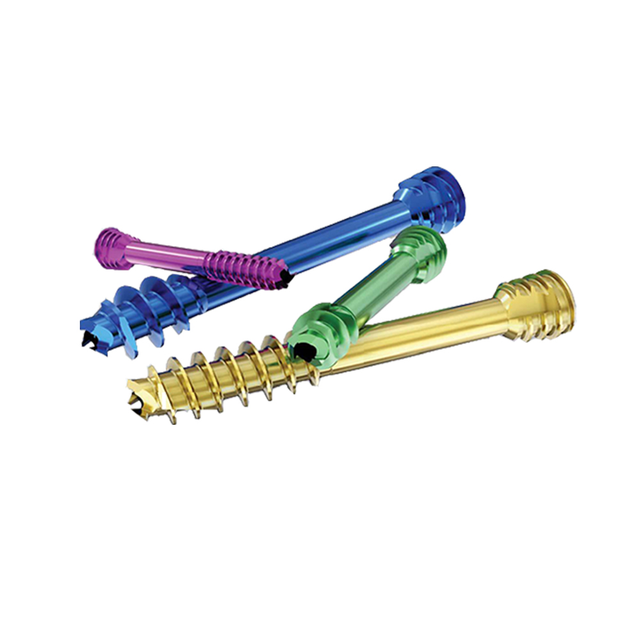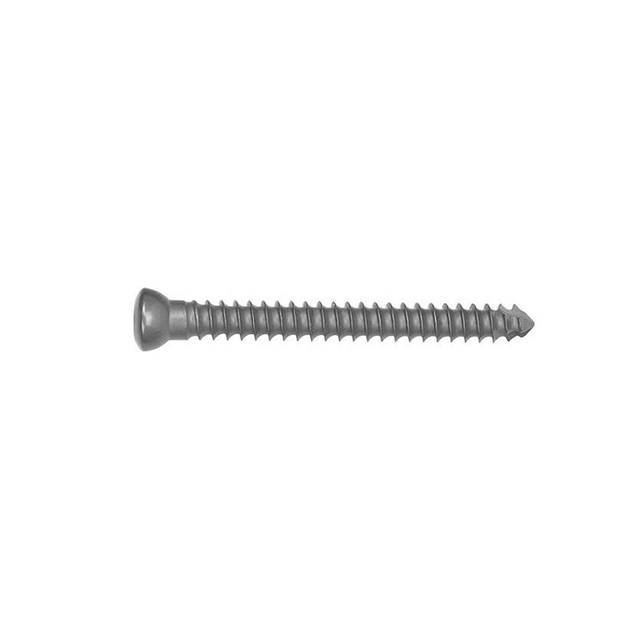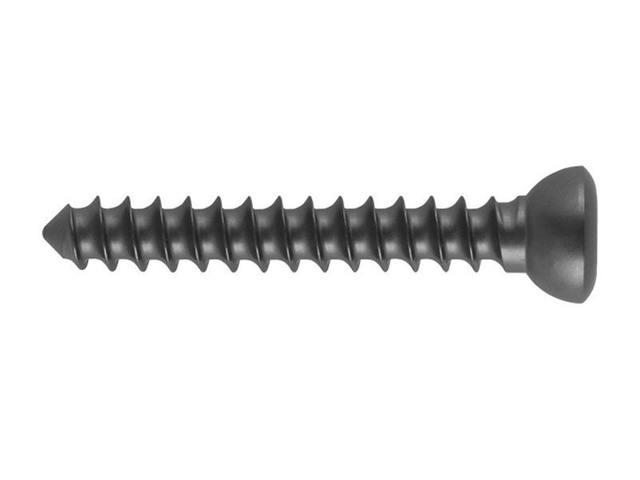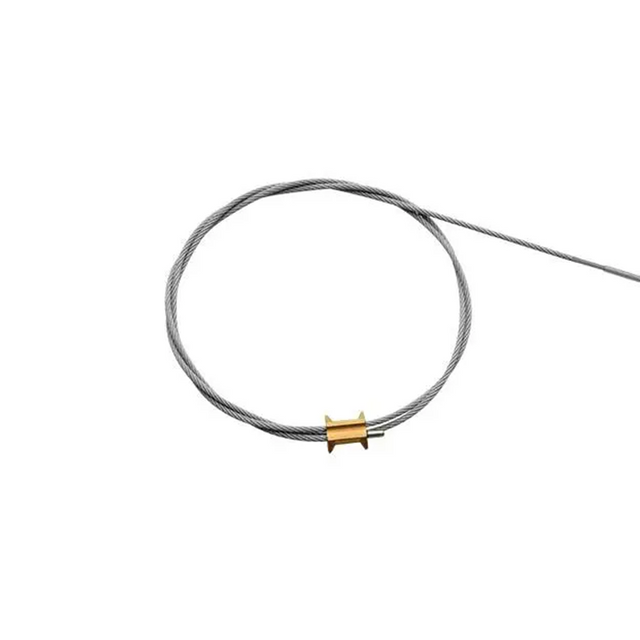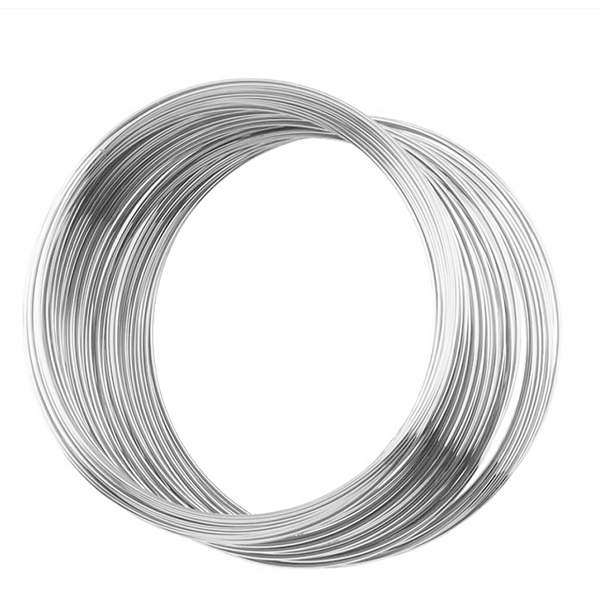What are bone screws?
Bone screws are specialized types of screws used in orthopedic surgeries to fixate bones together. They are typically made of stainless steel or titanium and come in various sizes and shapes depending on the specific surgical application.
Bone screws are used in a wide range of procedures, such as fracture repair, spinal fusion, joint replacement, and osteotomy. They are designed to provide rigid internal fixation and promote bone healing. Bone screws can be either self-tapping or non-self-tapping, and they can be inserted manually or using power tools.
The selection of a bone screw depends on several factors, such as the size and shape of the bone, the type of fracture, and the surgeon's preference.
What kind of screws are used in bone?
The screws used in bone are typically made of metal, such as stainless steel or titanium. The type of screw used depends on the specific application and the surgeon's preference. Common types of bone screws include cortical screws, cancellous screws, and cannulated screws. Cortical screws are used for dense bone, such as in the shaft of long bones, while cancellous screws are used in softer bone, such as in the ends of long bones and in the vertebrae. Cannulated screws have a hollow core that allows them to be inserted over a guide wire, which can be helpful in certain situations.
What are the types of bone screws?
There are several types of bone screws used in orthopedic surgeries, including:
Cortical Screws: These are used to fixate the cortical bone, the hard outer layer of the bone. They have a partially threaded shaft and a tapered end.
Cancellous Screws: These screws are designed to fixate the cancellous bone, the softer inner layer of the bone. They have a fully threaded shaft and a blunt end.
Cannulated Screws: These screws have a hollow center, which allows a guide wire or other instruments to pass through them. They are used in minimally invasive surgeries.
Headless Screws: These screws have no head and are designed to be countersunk into the bone. They are used in areas where a screw head would interfere with joint movement.
Locking Screws: These screws have a threaded head that locks into the plate, creating a fixed-angle construct. They are used in unstable fracture patterns or in osteoporotic bone.
Self-Tapping Screws: These screws are designed to tap their own threads as they are inserted into the bone. They are commonly used in orthopedic surgeries.
Self-Drilling Screws: These screws have a drill bit attached to the end, which allows them to drill their own pilot hole as they are inserted into the bone.
The choice of screw type depends on the location of the bone to be fixed, the type of bone, the fracture pattern, and the surgeon's preference.
Are bone screws permanent?
Bone screws can be permanent or temporary, depending on the type of surgery and the patient's condition. In some cases, the screws are intended to be permanent and are designed to remain in the bone for the rest of the patient's life without causing any problems.
In other cases, such as when screws are used for fracture repair or spinal fusion, they may be removed once the bone has healed or the fusion has taken place. The decision on whether to remove the screws depends on factors such as the patient's age, health status, and the type of surgery performed.
Do screws in bones rust?
Most bone screws used in modern orthopedic surgery are made of materials such as titanium or stainless steel, which are highly resistant to rusting.
However, over time, there is a possibility that screws may corrode or degrade, particularly if there is exposure to bodily fluids or other substances that can cause corrosion. This can sometimes lead to complications, such as infection or loosening of the screw.
It is important for patients to follow their surgeon's instructions for care and monitoring of their implant to minimize the risk of complications.
What happens when screws are removed from bones?
When screws are removed from bones, the holes that were drilled to insert the screws may remain open for a period of time, until the bone has had a chance to fill in the gaps and heal fully.
In some cases, the removal of screws may cause some discomfort or pain for a short period of time as the body adjusts and the healing process continues.
However, in general, the removal of screws from bones is a relatively simple and low-risk procedure, and most patients are able to resume normal activities within a few days to a week after the surgery.
It is important to follow the advice of your healthcare provider regarding post-operative care and any restrictions on physical activity or other behaviors during the healing process.
English
Français
Русский
Español
العربية
Português
Deutsch
italiano
日本語
한국어
Nederlands
Tiếng Việt
ไทย
Polski
Türkçe
አማርኛ
ພາສາລາວ
ភាសាខ្មែរ
Bahasa Melayu
ဗမာစာ
தமிழ்
Filipino
Bahasa Indonesia
magyar
Română
Čeština
Монгол
қазақ
Српски
हिन्दी
فارسی
Kiswahili
Slovenčina
Slovenščina
Norsk
Svenska
українська
Ελληνικά
Suomi
Հայերեն
עברית
Latine
Dansk
اردو
Shqip
বাংলা
Hrvatski
Afrikaans
Gaeilge
Eesti keel
Māori
नेपाली
Oʻzbekcha
latviešu
অসমীয়া
Aymara
Azərbaycan dili
Bamanankan
Euskara
Беларуская мова
भोजपुरी
Bosanski
Български
Català
Cebuano
Corsu
ދިވެހި
डोग्रिड ने दी
Esperanto
Eʋegbe
Frysk
Galego
ქართული
guarani
ગુજરાતી
Kreyòl ayisyen
Hausa
ʻŌlelo Hawaiʻi
Hmoob
íslenska
Igbo
Ilocano
Basa Jawa
ಕನ್ನಡ
Kinyarwanda
गोंगेन हें नांव
Krio we dɛn kɔl Krio
Kurdî
Kurdî
Кыргызча
Lingala
Lietuvių
Oluganda
Lëtzebuergesch
Македонски
मैथिली
Malagasy
മലയാളം
Malti
मराठी
ꯃꯦꯇꯥꯏ (ꯃꯅꯤꯄꯨꯔꯤ) ꯴.
Mizo tawng
Chichewa
ଓଡ଼ିଆ
Afaan Oromoo
پښتو
ਪੰਜਾਬੀ
Runasimi
Gagana Samoa
संस्कृत
Gaelo Albannach
Sepeti
Sesotho
chiShona
سنڌي
Soomaali
Basa Sunda
Wikang Tagalog
Тоҷикӣ
Татарча
తెలుగు
ትግንያውያን
Xitsonga
Türkmençe
संस्कृत
ئۇيغۇرچە
Cymraeg
isiXhosa
ייִדיש
Yorùbá
isiZulu










